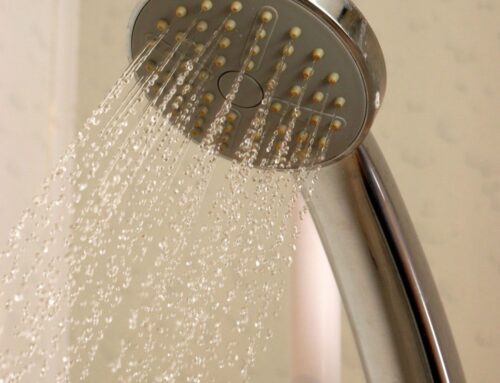Whether you are a first-time homeowner or have owned multiple homes through the years, home maintenance can be intimidating and overwhelming. However, there are many home maintenance items that you can (and should) do yourself. Here are 15 home maintenance tasks that every homeowner should know how to do themselves to save money and headaches.
Swap Out Furnace Filters
If you want your HVAC system to work efficiently and last longer, you need to change your filter regularly. Most manufacturers suggest at least every three months. However, if you are using the system a lot, live in an area with a lot of dust, or you have asthma, severe allergies, or other such medical conditions, you may want to change it more often. This task is as simple as removing the old, dirty filter from the HVAC system and putting a new one in its place, but you’ll want to make sure that you replace it with the right sized filter and the arrow is facing the correct direction (towards the furnace/blower motor). Need more guidance? The following video can help you.
Change Smoke Detector Batteries
Whether you have a battery-powered smoke detector or a hardwired one that has a battery backup, you’ll have to replace the battery at some point. It’s a good idea to make this part of your routine when you change clocks twice a year, but if you don’t have a regular schedule to change the battery, the detector will let you know it’s time to do so by chirping. Replacing the battery is as easy as removing the old battery and putting a new one into the smoke detector. Want a step-by-step guide on replacing a battery? This video has instructions:
Reset a Tripped Breaker
The reality is every homeowner will encounter a tripped breaker at some point. It may be when you are using multiple items at the same time and suddenly lose power. Or, you may plug something in an outlet only to find it won’t work. To reset the breaker:
- Go to your breaker box (most likely in the basement), open the cover, and check all the breakers. A tripped breaker will be midway between the on and off positions.
- Flip the tripped breaker to the off position, then flip it to the on position. This resets the breaker.
If a breaker continually trips, you may have overloaded it, one item plugged into the outlets is faulty, or there is a bigger problem that needs to be looked at by an electrician. To figure out the cause and next steps, unplug all items connected to that breaker. If the breaker trips with nothing connected, call an electrician. If it remains on, plug items in one at a time. If the breaker trips, reset the breaker, then plug only the last item you plugged in before it tripped. If that item alone trips the breaker, that item is faulty and needs to be repaired or replaced. If that item alone does not trip the breaker, you are overloading the circuit and need to move some items off of it.
Test and Reset GFCIs
Outlets in areas near water or where you can come in contact with water should be Ground Fault Circuit Interrupter (GFCI) outlets. Like breakers, these outlets can trip and may need to be reset. To reset, push the reset button in the middle of the outlet (more on resetting a GFCI in video below). To ensure GFCIs are working properly, you should test them monthly by plugging an appliance or light into the outlet and pushing the test button. If the appliance loses power, the GFCI is working properly and you can push the reset button to turn it back on. If the GFCI is not working properly, it will need to be replaced.
Note: Heavy appliances such as freezers, refrigerators, and power tools can trip a GFCI. You should never plug these into GFCI outlets.
Turn Off Water
If you have water leaking in your home, you’ll want to stop it as soon as possible, so it’s a good idea to familiarize yourself with how to turn water off to various plumbing fixtures and to the house as a whole. Each sink and toilet will have its own shutoff you can use if there is a leak at just that sink or faucet. These are typically located under the sink and on the wall behind the toilet. If there is a bigger leak and you need to shut off water to the entire home, you can do so at the main valve in the basement. To shut the water off, turn the lever until it is perpendicular to the water line. There is also a main shutoff at the meter outside your home.
Hang a Painting or Shelf
Hanging a picture or shelf is a very simple thing to do, but if not done properly, you could cause significant damage to your wall. If what you are hanging is lightweight, you may not need to do anything other than hammer a nail in the wall and hang it. However, in most instances, you are going to want to find a wall stud and attach it there, use an anchor, or a combination of both. To find a wall stud, get a stud finder from your local hardware store. If there isn’t a stud in the area where you want to hang the painting or shelf, use a drywall anchor to give more support and reduce the likelihood of the painting or shelf pulling out of the wall.
Paint a Wall
Painting is a simple project that any homeowner can tackle. The key to a good paint job is taking your time. That means properly prepping the surface to be painted, using good painting techniques, giving the paint proper time to dry, and cleaning up well. Check out our How to Paint Like a Pro blog for more detailed information.
Patch a Small Hole in Drywall
Patching small holes in drywall, such as those caused by nails or screws is a simple project. Fill the hole with spackle and use a putty knife to level it so that it is flush with the wall. After the spackle has completely dried, sand it until it is smooth. Finish by touching up the area with paint. The same technique can also be used on small cracks in your drywall.
Unclog a Drain
Even if you are careful about what you put down your drains, you likely will experience the occasional clog. In most cases, you can unclog the drain yourself and save money that would be paid to a plumber. Start by using a plunger on the clogged drain to dislodge any buildup. If there’s not already water in the sink, tub, etc., fill it up about halfway so you will know if/when the clog is cleared. If this does not work, you can use a commercial drain cleaner (follow instructions closely), use baking soda and white vinegar as a cleaner (for instructions on this method, click here), or use a drain snake to clear the blockage. If none of these work, you may need to call a plumber.
Fix a Running Toilet
If your toilet continues to run after flushing, check the shut-off float to see if it has lifted too high in the tank. If that is the case, pull straight up on the float until it stops the water at the correct level. Also, check the chain or rubber lift on the flush handle – if it is too tight, it will prevent the rubber stopper at the bottom of the tank from sealing. If these do not solve the problem, the flapper may not have a tight enough seal and should be replaced. Replacement parts can be found at a local hardware store.
Note: Bleach tablets or toilet drops that have bleach will deteriorate the flapper and washers, so it is recommended that you do not use these.
Fix a Leaky or Dripping Faucet
There are a few reasons that a faucet in your home may leak. If you notice a leak around the base of a faucet, it may need to be tightened. When tightening bolts on plumbing hardware such as faucets always cover the bolt with a soft cloth and then use a wrench to tighten. Without the cloth you could damage the metal finish. Consult the manufacturer of the faucets if this does not work.
If your faucet is dripping, it may be due to a dirty aerator or a worn-out washer. Aerators should be regularly check and cleaned to remove dirt and foreign matter. If cleaning the aerator does not stop the drip, replace the washer: turn off water using valve under the sink, remove the faucet stem, change washer, and reinstall faucet stem. (Please note that some manufacturers do not use rubber washers – check with your manufacturer for more information.)
Fix a Squeaking Hinge
For a squeaky hinges, it is best to use a silicone lubricant or petroleum jelly. Oil can gum up and attract dirt. For cabinet hinges, apply a small amount of lubricant to the hinge, then open and close the door to work it in. For a door hinge, remove the hinge pin and apply the lubricant to the pin. Place the pin back in the door and open and close the door to work it in and ensure the squeak is gone. When done, wipe off any excess lubricant.
Fix Sticky Drawers
Fixing a sticky drawer is similar to fixing a squeaking hinge. Apply a small amount of silicone lubricant to the glides, then open and close the drawer several times to work the lubricant in. Be sure to wipe off any excess lubricant with a clean, soft cloth.
Recaulk
Recaulking is an extremely important home maintenance task that should be done regularly. Time and weather changes can cause caulk to dry out and shrink, and when it does so, it is not longer providing a proper seal against water. Regularly inspect caulking around sinks, tubs, countertops, windows, thresholds, exterior door casings, etc. If there are cracks or missing caulk, repair it immediately using a caulk gun to apply fresh caulk. If it is a large area that needs repair, you will want to remove old caulk first and start with a clean surface to get the best results. For more detailed instructions on re-caulking, check out our How to Recaulk Surfaces in Your Home blog post.
Clean Gutters and Downspouts
Clogged gutters and downspouts can create big problems down the road for you, including creating ice dams, allowing water to seep out of the gutter and damage other parts of your home, creating safe havens for pests, and causing gutters to rust and rot. To avoid these issues, it is best if you clean gutters regularly (twice a year – spring and fall). Starting near the downspout(s) and working to the closed end, remove as much debris as you can by hand. If you need additional help removing debris, you can use a leaf blower or wet-dry vac. After removing debris, flush the gutters with your hose. Start at the highest point and spray water towards the downspouts. Watch the gutters and downspouts closely and make sure water is flowing properly through them. If there is a blockage in the downspout, feed the hose up the downspout from the ground and turn the water on full pressure to try and dislodge any clogs. If this does not clear the clog, use a drain snake or the stick or handle of a yard tool to push debris out.
Once you have cleared out debris and clogs, check for proper water flow and repair any areas where there is not proper sloping (if water is pooling, your slope is wrong) or where the gutter has come disconnected. Finally, seal any leaking seams or joints with a gutter sealant/caulking.
Looking for your dream home? Liberty Homes has been building new homes in Utah for nearly 30 years. We take pride in our trade, crafting each home as if it were our own. Our quality, affordable homes are energy smart and thoughtfully personalized for your active Utah lifestyle. We currently have townhomes available in Salt Lake County and single-family homes in Heber City. Plus, 55-plus single-family homes coming soon in West Jordan. Contact us today to find your dream home.

Want home decorating and maintenance tips, craft ideas, recipes, and more delivered right to your inbox?
Sign up for our monthly newsletter:




